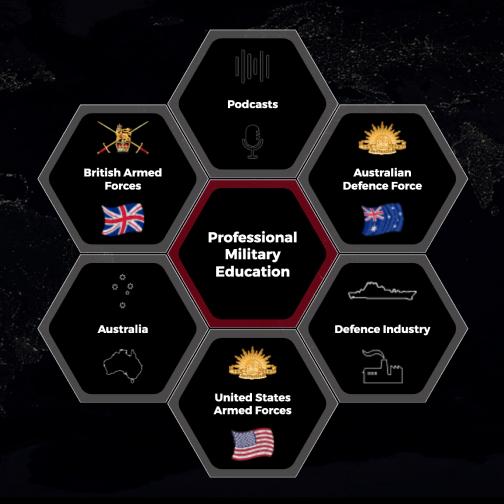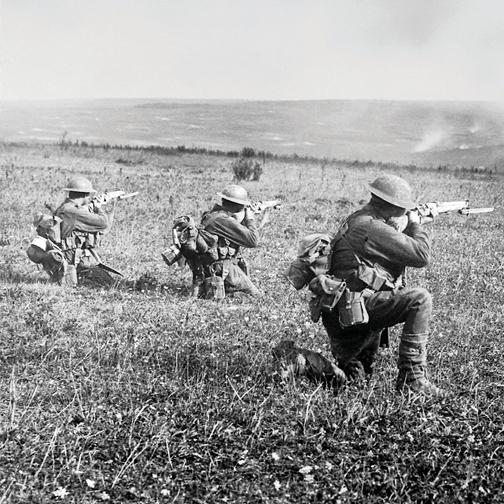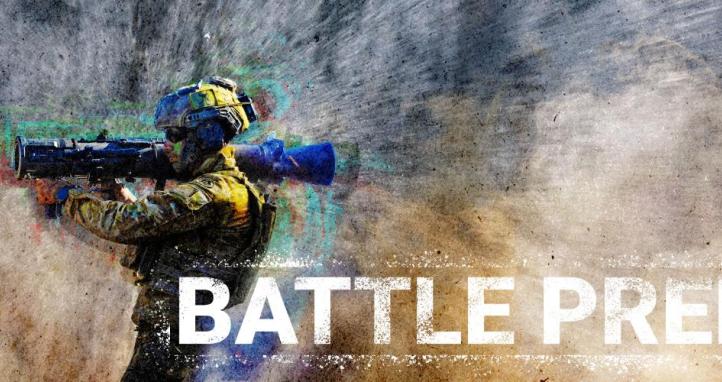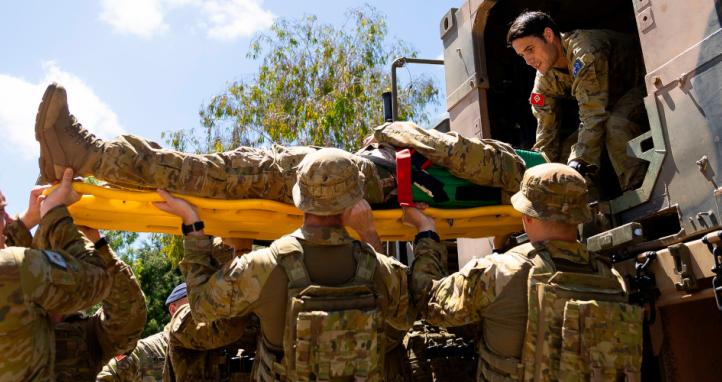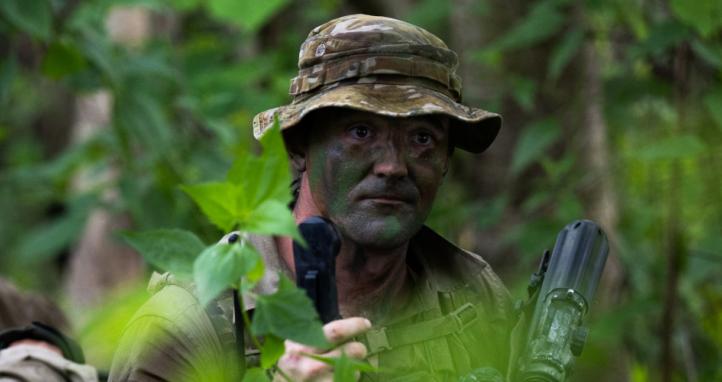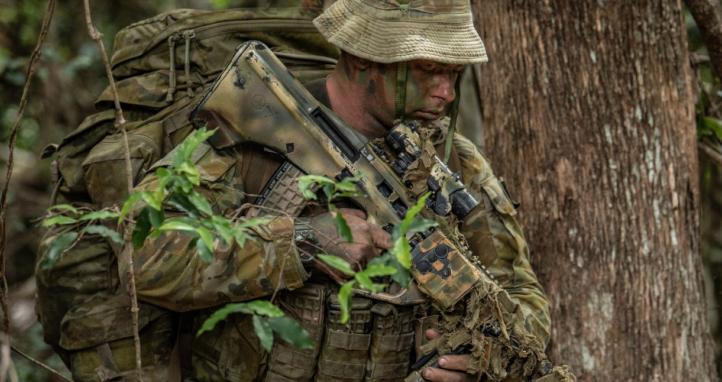1: Have a Tourniquet PACE plan
Even with perfect application technique, a combat application tourniquet may not achieve complete control of severe limb bleeding. Understand and train your responses to this potential outcome. A suggested PACE plan for the emergency management of high-volume limb haemorrhage is detailed below:
- Primary: Immediate Action Tourniquet
High, tight, horizontal and over clothing. Ensure all excess drawn out of the strap and further tighten the windlass if bleeding persists. - Alternate: Dual Tourniquets
Apply a second tourniquet adjacent to the Immediate Action Tourniquet with the windlass offset for ease of tightening. Multiple tourniquets may be used on a single limb to achieve haemorrhage control. - Contingency: Compression Wound Packing
Leaving dual tourniquets in place, expose the wound to pack the internal cavity firmly and then apply external compression dressings. - Emergency: Improvised Tourniquet Application
Various methods have been described. The essential feature of an improvised tourniquet system is the presence of a windlass.
2: Fold configuration to enable rapid application
Have your tourniquets configured to allow rapid deployment in an emergency. Pre-thread your tourniquets and fold with the strapping loop of maximal size. Pre-threading enables the tourniquet to be self-applied using a single hand in the case of an upper limb injury and reduces the number of additional fine motor actions required for task completion under duress. If you need to apply the tourniquet as a strap rather than a loop, disassembly of a pre-threaded tourniquet is a simple gross motor action, easily conducted under pressure.
3: Store readily accessible using either hand
A tourniquet stored inside your right shoulder pocket is not easily accessible if your left arm has been injured. Tourniquets need to be readily accessible with either hand in an emergency. Storing your primary tourniquet centrally on the front of your plate carrier is an optimal location which also facilitates rapid identification and access by first responders.
Placing your primary tourniquet inside an Individual First Aid Kit (IFAK) secured to the back of your pistol belt has several downsides. How fast can you access and open your IFAK to retrieve a tourniquet using a single hand? Does your Alice Pack frame obstruct access? Is your IFAK tourniquet easily located by first responders when lying on your back? You may choose to carry an additional tourniquet inside your IFAK; however, this is not an ideal location for your primary device.
Develop a unit SOP for tourniquet carriage and ensure compliance. Lives will depend on it.
4: Carry more than one tourniquet
How many tourniquets carried by an individual soldier and collectively within the team depends on threat assessment and job role. There are many situations where greater than one torniquet is necessary. Polytrauma wounding from small arms, fragmentation, or blasts may necessitate the application of tourniquets on multiple limbs. More than one tourniquet on a single limb may be required to achieve haemorrhage control. Additional tourniquets will be required for the conduct of tourniquet de-escalation. A casualty sustaining severe blast injuries from an IED detonation may therefore feasibly require the application of 5 or 6 tourniquets to survive. What about multiple casualties?
Consider your capacity to independently achieve emergency haemorrhage control in these situations. What if your team is separated from the main body and unable to obtain additional medical support and equipment? What if an individual soldier sustains multiple severe limb injuries but is unable to receive assistance due to enemy action?
For soldiers undertaking combat operations, a single tourniquet is not sufficient.
5: Protect your tourniquet from environmental damage
Tourniquet materials when exposed to harsh environmental conditions will degrade over time, resulting in higher rates of mechanical failure upon application. Even tourniquets with aluminium windlass designs are susceptible to environmental damage as the webbing strap and plastic windlass retention systems may degrade. Whilst this may suggest tourniquet carriage within an IFAK is preferable to being openly exposed on a plate carrier, the risk of environmental degradation is offset by ease of identification and speed of accessibility in an emergency. A good solution is to protect tourniquets within purpose designed Molle pouches attached to your plate carrier.
6: New tourniquets for operational deployment
Combat tourniquets are single use devices. Tourniquets tensioned during training activities may accumulate microstructural damage and have an increased risk of failure after repetitive load application. Like protecting tourniquets from environmental damage, devices which have been repetitively used in training represent a potential risk during operational deployment.
Prior to deployment, exchange all tourniquets demonstrating visible degradation and those that have been tensioned during training activities. Accept only new ADF issue or CoTCCC approved tourniquets for deployment.
7: Horizontal is essential
A tourniquet must be applied transverse to the limb to prevent inadvertent loosening over time. Whilst an obliquely applied tourniquet may be effective initially, casualty movement will naturally cause migration into a more horizontal position with subsequent loss of application pressure. Delayed rebleeding is particularly dangerous as it may be concealed and easily overlooked.
Upper limb tourniquets are particularly at risk of being applied in an incorrect oblique orientation. By trying to place the tourniquet too high upon the deltoid or shoulder region, the device is at risk of failure.
A wound located on the groin, arm pit, or shoulder and is too high for the application of a horizontal tourniquet is known as a junctional wound. Junctional wounds require emergency haemorrhage control by compression wound packing or special devices, rather than the application of a limb torniquet.
8: Pull the strap towards you
Tourniquets achieve haemorrhage control by creating circumferential compression. Whilst the windlass mechanism provides the mechanical advantage to obtain the necessary force, it has only a limited number of effective winds. To obtain effective compression using a tourniquet, remove all slack from the strap and apply firm tension before locking off and using the windlass. It is easiest to draw slack and apply firm pre-tension by pulling the strap, rather than pushing. This is especially important for torniquet self-application. Pulling the tourniquet strap towards the midline during tourniquet self-application is easier and more effective than pushing the strap away.
9: Learn tourniquet de-escalation
Tourniquet de-escalation refers to a spectrum of procedures and skills used to minimise or eliminate the harm associated with tourniquet ischaemia. Tourniquet de-escalation may be organised into skill framework according to procedural complexity and provider training level. Fundamental level tourniquet de-escalation includes a limited number of high impact knowledge tools and simple procedural skills suitable for all soldiers to safely administer with appropriate training. The Tourniquet Conversion-Replacement Drill represents the essential all corps de-escalation skill.
10: High fidelity training
High fidelity tourniquet application training should be conducted within complex environments, under duress and in suboptimal conditions. Application of an Immediate Action Tourniquet is a drill – repetition and progression will develop instinctive automated behaviour patterns. Practice tourniquet self-application on all limbs. Increase difficulty by using a single hand, with your eyes closed and under time constraint. Your life may depend on these skills.
From an organisational perspective, train for the management of multiple casualties with reference to safe tourniquet application times (Torniquet Traffic Light). What are the implications of time sensitive casualty clearance and how does this influence the completion of mission objectives? How does point of injury tourniquet de-escalation influence resource allocation and de-conflict mobility assets?
